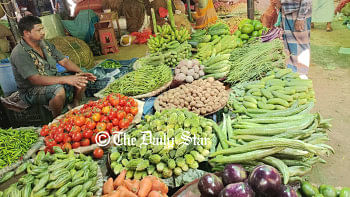Tread carefully on forex use

In a move unprecedented in Bangladesh's economic history, the government has decided to use 524.56 million euros (Tk 5,417 crore) from the foreign exchange (forex) reserves for the dredging of a channel for Payra Port in Patuakhali, as part of a plan to use the reserves for high-priority development projects. This is the first project to be bankrolled from the Bangladesh Infrastructure Development Fund (BIDF), which was set up to lend money from the reserves. According to the finance ministry, the government will only use the fund to invest in projects that would have a high rate of return, and annual investment from BIDF would not be more than USD 2 billion. Initially, only projects related to the port and power sectors will be considered.
There is no denying that the decision to use forex reserves, meant to meet a country's external obligations, for such purposes maybe highly consequential. The issue has been in discussion for some years now. Despite concerns raised by some economists, the government has decided to give it a go-ahead hoping it will bring in hefty returns and also help save on foreign currencies spent in projects where costs often shoot up due to the interest rates and other hidden costs of foreign loans. The economic argument of using surplus forex reserve in profitable development projects may sound convincing, but it all depends on how carefully and judiciously the government chooses and implements those projects. The government has laid out a number of guidelines in this regard. It has also sought to address concerns about the need for keeping adequate reserves by stating that reserves will be maintained to cover six months of import bills—an issue that will be observed closely going forward. As regards concerns about its likely discouraging effects on foreign lenders and foreign direct investment (FDI) in Bangladesh, the government has to ensure that nothing of this sort happens.
We're still in the early stages of this new development and a lot remains to be seen about how the government goes about it in the future. Given the very valid concerns about internal governance issues that often lead to financial corruption and losses, it will be advisable to tread carefully on this issue and consider the Payra Port project rather as a test case for how the theory of using forex for development projects works. In any case, the concerns of economists must be addressed with the highest priority and it must be reflected in all future actions and decisions. Only then can we be truly confident of the feasibility of this highly unusual decision.

 For all latest news, follow The Daily Star's Google News channel.
For all latest news, follow The Daily Star's Google News channel. 



Comments